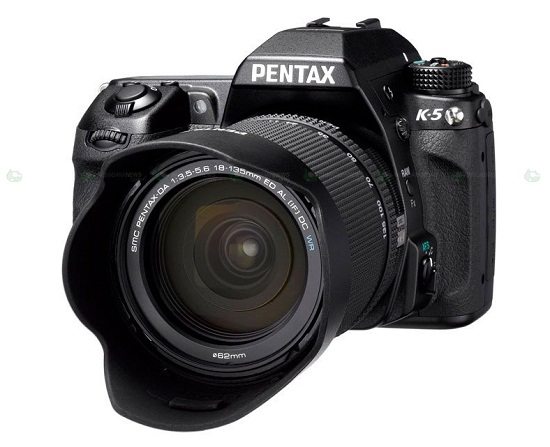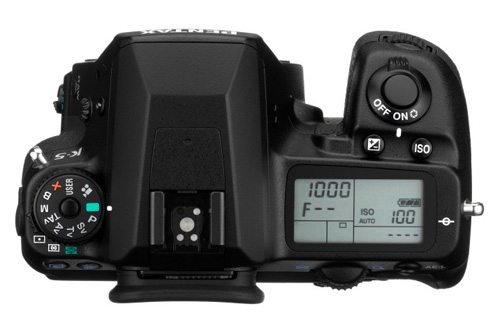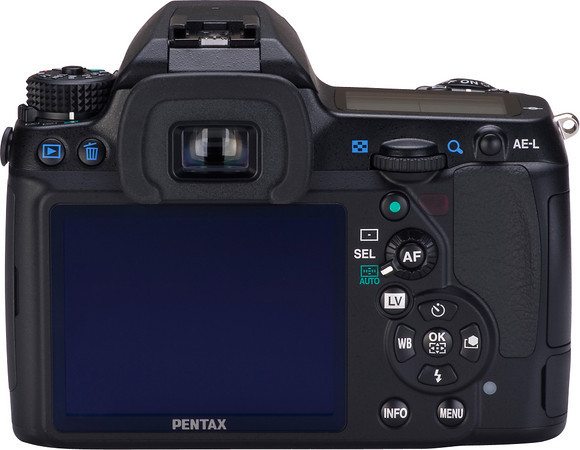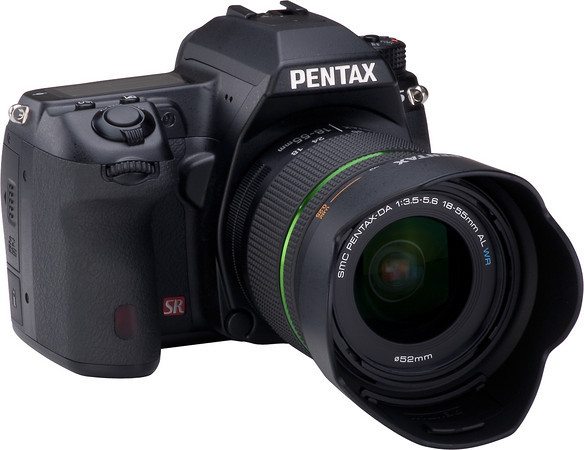Last Updated on 07/17/2011 by Chris Gampat
The Pentax K-5, A little fist with a big punch. At least that’s what I’m feeling so far when using it. I’ve had the unit for a little while now and it is already starting to grow on me. Chris did a hands-on with the unit and provided samples a little while back. So let’s just go right into it.
Tech Specs
The K-5is Pentax’s newest DSLR and continues the company’s tradition of powerful imaging in compact packages. The K-5
has grabbed headlines with its outstanding DxO ranking, as we reported here and offers an impressive list of features. At its heart is a 16.3 MP CMOS sensor with integrated image stabilization and a 1.5x crop factor. The camera has sophisticated 77-segment metering and a new 11-point autofocus system. It will shoot up to 7 frames a second in 8-bit JPG or 14-bit RAW and records images to a single SD slot (which supports SDHC and SDXC). We also recommend Eye-Fi Pro X2
cards.
As with previous generations of Pentax DSLRs, the K-5offers options for both full manual control and a completely care-free automatic mode, indicated with a green square on the exposure mode dial. The camera offers a plethora of exposure modes. In addition to familiar Aperture Priority, Shutter Priority, Program, Manual, and Bulb modes, the K-5
adds ISO Sensitivity Priority, and Shutter and Aperture Priority, a mode that automatically sets ISO based on selected settings. The camera body includes front and back customizable control wheels and dedicated buttons and switches to set ISO, exposure compensation, focus and metering modes, white balance, etc. Video recording (up to 1920 x 1080p at 25 fps AVI) is selected from the exposure mode dial while Live View is engaged via a dedicated button.
Ergonomics
The Pentax K-5 is a compact camera, especially compared to competing models from other companies like the Canon 7D and new Nikon D7000. The Nikon D200 that happens to be on my desk, is significantly larger. The K-5is designed with deeply-molded grips and a robust rubbery shell. When compared to the bigger Nikon, the K-5 feels designed to fit in my fingers and not so much in my palms, but it sits well and is clearly well thought-out. Both cameras feel solid and very well made, with no build quality advantage for either. Using the K-5
is comfortable and natural feeling with key functions falling in just the right spots. The control wheels, especially, are crisp to operate and well-placed. The dense cluster of buttons to the right of the LCD screen is a bit frightening at first, and using it smoothly has required a few days of practice, but it allows quick access to a number of shooting functions.
A significant ergonomic advantage of the K-5is its small size. The camera is a breeze to sling around all day. Few DSLRs of this level are so portable. My test camera came equipped with Pentax’s excellent 55mm f/1.4 DA* and its tough rubber-rimmed, velvet-lined hood. Combined, the camera and lens are robust, compact, and solid.
Several years ago, I spent five days hiking in the jungles of Peru around Machu Picchu with a Pentax *ist DS, one of Pentax’s first two DSLRs. The camera was a comfortable, lightweight companion, despite long days on the trail. Also, it rained constantly, which didn’t seem to bother the weather-sealed Pentax. Having said that, this more sophisticated modern Pentax feels even tougher and just as compact, with a more deeply rubberized body and obvious weather sealing around snug-fitting covers. I believe the combination of tough build and compact size will have obvious appeal to the adventurous photographers among us.
Button Layout
The Pentax K-5allows quick access to most shooting functions. I appreciate the prioritized ISO and exposure compensation buttons next to the shutter release. Also around the shutter release button (which, no offense to Canon, is where it belongs) is an easy-to-click on/off switch. Also, I would consider the K-5’s prominent placement of the ISO and exposure compensation buttons a layout advantage over the Nikon D7000
which mysteriously places a metering mode button on the sacred pointer-finger plate. The K-5
also has other nicely-placed buttons, the AF button, AE-L button, as well as a customizable button to set the camera to RAW for the next capture.
Very prominently placed where a photographer’s right thumb is likely to sit is Pentax’s green button. When in Manual, Shutter and Aperture, or Program exposure modes, the green button aligns shutter and aperture settings with the program settings the camera would have picked. When in manual mode, a quick press can set up an auto-exposure capture, which is smart and handy for the photographer on the go, like taking an exposure reading and having settings changed automatically with a single press. On the other hand, it’s a sign the camera is designed for use in the field and not, perhaps, the studio, where a measured strobe exposure could be accidentally blown out. The function of the green button, along with both control wheels, can be easily customized as discussed below.
The collection of buttons to the right of the LCD screen will take some getting used to. It makes me miss the old simplicity of the *ist DS with buttons on both side of the screen in a manner more similar to today’s Nikons. Of course functions like Live View, a shooting info screen, the green button, etc. have all been invented since the *ist DS, but one by one, Pentax has planted too many buttons on the K-5’s right-side rear. As another more minor quirk, the process to format an SD card is buried deeply in menus, which is a function I use every day shooting.
But quirks and layout preferences aside, all major shooting functions are easy, intuitive, and close at hand. It’s certainly a camera that, once set for file type and white balance, can be left at eye level for sporty, quick-fingered shooting.
Autofocus
The K-5shares an updated autofocus system with Pentax’s new medium format 645D and it is fantastic. The eleven-point spread covers a good deal of the frame (a good bit more than it does in the monster-sensored 645D, I’ll bet) and is quick and nimble in a wide range of lighting. The camera body has a bright green assist lamp that is both fun and relatively unobtrusive. Paired with the Pentax SMC DA* 55mm f/1.4
, the camera can grab a quick focus on nearly anything.
Even compared to the professional cameras I use every day, the K-5 autofocus is fast and accurate and a joy to use. Its controls are intuitive and well-placed and include a point selection switch, a mode switch, and an AF button. My one complaint would be the camera’s method for point selection. A photographer must hold the OK button for a second or two to switch the four-way selector buttons to point selection mode. It’s a work around for the dual nature of the four buttons (left is for white balance settings, up is for drive mode settings, for example). Nikon’s method of allowing the navigation buttons to zoom around from point to point feels, by comparison, much more fluid and intuitive.
On the plus side, the Pentax K-5allows a very natural relationship between manual and autofocus. With the 55mm f/1.4, a photographer can turn the focus ring at any time, regardless of settings to make manual adjustments. The ring doesn’t move when the camera autofocuses, so it’s easy to hold while shooting (which is great ergonomically, given the compact dimensions). Also, the lens has an AF/MF switch on the barrel that is perfectly placed for easy operation and the camera responds to the the lens setting, regardless of the camera body’s switch setting.
The camera’s 16.3 MP is more than enough resolution to really test an autofocus system. The point must be specifically placed (for example on a portrait subject’s near eye, not her ear) and a photographer must be careful not to sway out of focus while recomposing after AF lock. Also, with lenses like the 55mm F/1.4, the depth of focus can be set dramatically low, emphasizing critical focus. The K-5is up to the challenge and capable of delivering crispy images with well-placed focus that gives way to beautiful out-of-focus bokeh.
Customization
I immediately reversed the K-5‘s control wheels, preferring to control aperture in the front and shutter speed on the rear dial, and it’s an easy change to make. The camera actually allows both wheels to be set differently for each exposure mode, allowing control of exposure compensation, ISO, shutter speed, and aperture setting. Under the E-Dial Programming menu within the camera menu, all nine exposure modes are listed (including video recording). Aperture priority, as one example, offers six scenarios for control wheel and green button control, including the ability to set the aperture control to either wheel and have the other wheel be either for exposure compensation or ISO. It’s a remarkable degree of personalization available to photographers. Also found under the camera menu are a quick set of “Button Customization” options, allowing preferences for the RAW and AF buttons as well as for the shutter release half press and depth of focus preview control.
The USER setting on the exposure mode dial allows the recall of 5 sets of pre-saved settings. I’ve set up one, for example, that sets the camera to manual exposure mode and DNG RAW recording. The actual Customize menu allows a familiar set of fine tuning options including autofocus fine tuning and various settings for exposure, autofocus, white balance, etc.
It is, to sum things up, a highly customizable camera, consistently intuitive and easy to use.
Conclusion, Day 1
To conclude, the Pentax K-5 is a compact, robust, and capable camera. It’s uniquely small compared to direct competition from Canon and Nikon, offers a wide range of similarly compact and able lenses including the 55mm f/1.4 DA* tested here. The camera offers a few innovative features in control and customization and will appeal to photographers desiring a compact, pentaprism (optical viewfinder) DSLR.
In upcoming posts, we’ll take a close look at image quality and day to day shooting.
Please Support The Phoblographer
We love to bring you guys the latest and greatest news and gear related stuff. However, we can’t keep doing that unless we have your continued support. If you would like to purchase any of the items mentioned, please do so by clicking our links first and then purchasing the items as we then get a small portion of the sale to help run the website.





